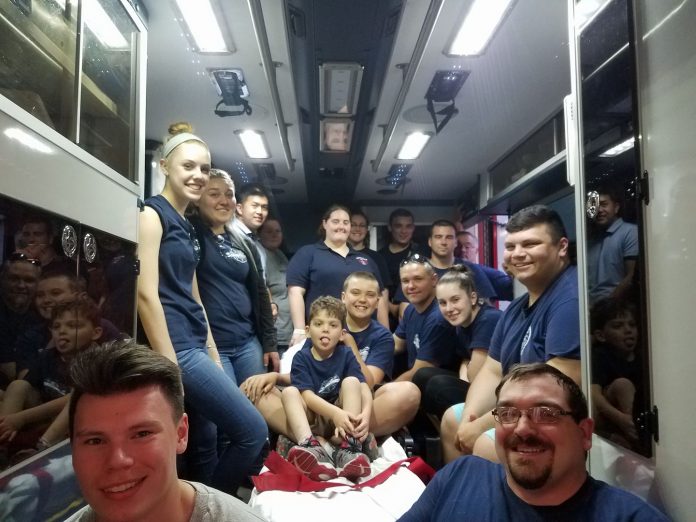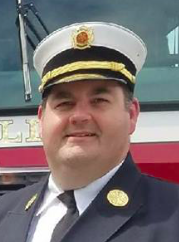
BURRILLVILLE – Volunteer firefighters called to help out with a blaze in Millville, Mass. on Sunday, Oct. 7 were unable to provide the requested mutual aid to the neighboring town due to the recent changes in the Nasonville Fire District.
Nasonville Operating Committee Chairman Gerry Lapierre told NRI NOW that the department is still up and running, as long as volunteers are able to respond. He says that details of the village’s restructuring will be addressed at an upcoming meeting.
“We’re a functioning department, and we hope to have more volunteers,” said Lapierre. “That’s something we’re working on.”
But on Sunday morning, three Nasonville volunteers, who said that wanted to respond to the call from Millville, say they were unable to do so due to the rapid staff changes and lack of instruction.
And they say it’s just one example of how members of the operating committee, unfamiliar with the details of how the department runs, are jeopardizing public safety by rushing to restructure the district without a plan.
“When all the paid firefighters were laid off, and the chief was laid off, that gave us no chain of command,” said volunteer firefighter Craig Cole. “We have no leadership.”
Residents in the district voted to eliminate 13 paid firefighters at the town’s annual meeting on Thursday, Sept. 27. The plan was presented to village residents as one of two “budget options” for the district’s fiscal year beginning October 1, and committee members said the alternative would be a 70 percent increase in fire district taxes.
Under the option chosen in a 62-20 vote by residents, committee members said taxes will decrease 30 percent, and emergency calls will be handled by the neighboring Oakland Mapleville Fire District, which is 2.5 miles away.
On Monday, Oct. 1, paid firefighters who had reported for work in Nasonville were sent home.
Days later, the operating committee voted to terminate Chief Joseph Bourquin, who had led the department for the past three years, and had just signed a two-year contract.
Bourquin was notified of the immediate “termination without cause” in an email on Wednesday, Oct. 3. Volunteers say that despite the abrupt dismissal, it was the chief who notified departments throughout the state of the changes in Nasonville, noting that a new plan would have to be formulated to address mutual aid – the process through which districts rely on each other for emergency help as needed.
The Nasonville Fire District currently has 26 volunteers, but only 7 or 8 are qualified to be firefighters, and only 4 or 5 are qualified to drive the vehicles, according to Cole. Only two have basic EMT certification and most do not live locally. The village has relied on the more experienced chief and paid staff for first response, with volunteers backing up and supplementing service.
Until last week, Cole said the Victory Highway station would typically have been manned by one paid staff member and one volunteer. Currently, the fire house is empty.
“The chief knew that the volunteers cannot take the calls,” said Cole.
At least one neighboring community was unaware that if they called on Nasonville, it was unlikely the district would be able to answer.
Millville firefighters called on the small department to deliver water to their pump station Sunday morning to help fight a dryer fire on Dominic Street. The Nasonville station is located just six miles from the Millville border, and the close proximity has made it a good candidate to supply water to the small town, which needs the water to boost their hydrants. Nasonville’s 2,000-gallon tanker has often made deliveries to the pump station on Central Street in Millville, which is then loaded onto fire trucks and brought to the scene.
“It’s very practiced skill, and it’s very effective,” said Cole of the process.
When no one from Nasonville responded, Millville firefighters called on the Harrisville Fire District. But the issue was resolved through mutual aid from another community before Harrisville firefighters left the station.
The Nasonville volunteers pointed out on Sunday that the incident shows how actions taken in the village – which has operated independently for the past 78 years – can have a ripple effect.
Cole, who serves as vice president of the Nasonville Fire Social Company, was one of three volunteers who say they were ready and able to respond to Millville. But without a designated leader or fully-trained staff, he said none of the remaining crew can answer.
“We have a significant safety issue right now,” said Cole, a 42-year-old volunteer who lives in Tiverton, but said he helps out in Nasonville because of Bourquin. “The chief was the glue that holds this department together. He brought people in from all over to provide service to the community because that’s what he cares about.”

“They gave us no structure on how they want us to run stuff,” said Alex Rivet, president of the NFSC, which helps out the district through fundraising to provide uniforms and supplies for volunteers. “I don’t think the people understand what’s happening. I can 100 percent guarantee we would have been at that pump house.”
“It’s crazy to me,” added Rivet. “I never thought it would come to this. When I walk in and look at the trucks, I know they’re not moving, and that kills me.”
Rivet, a 22-year-old who lives in Woonsocket and has volunteered in Nasonville for the past four years, noted that under Bourquin, the station has served as a launchpad for volunteers training to become professional firefighters.
“Nasonville is what gave me the chance to become what I’m going to be in the future,” said Rivet. “Most full-time fire departments don’t give people a chance.”
Sabrina Dubois, a 20-year-old volunteer from Woonsocket who is completing her training with the hopes of one day becoming a full-time firefighter, also credited the chief with her progress.
“I learned everything that I know from Nasonville,” Dubois said. “The chief gave us a chance. That’s how I became certified.”
Cole said that between 10-15 former Nasonville volunteers now serve as professional, full-time paid firefighters elsewhere. Bourquin ran training sessions every Wednesday, with the more experienced paid staff members teaching newbies the ropes.
That changed last week in what began over a contract dispute in September. Committee members have said that union leadership demanded higher salaries, overtime, healthcare and pensions for paid staff, and refused to negotiate.
The Nasonville union has requested interest arbitration in the matter, but with the legal process still pending, the committee took action with voters.
“Our fiscal year ended Sept. 30, so we have to prepare for the new budget year,” said Lapierre. “We went in a new direction, but we did budget for a chief.”
Asked if the district was currently prepared to respond to a fire, Lapierre said, “We still have our volunteers. It depends on if volunteers are able to respond.”
“We have Oakland Mapleville 2.5 miles away, which will continue to respond to our calls,” he added, noting of future leadership, “That will all be discussed.”
Cole said the OMFD’s response time for Mapleville is “8-10 minutes at best. You’re looking at 15 for a rescue on the outskirts.”
“For us, it’s usually about 6 minutes to the outskirts,” he said.
As the volunteer crew sat talking in a coffee shop on Sunday, another call came in, with reports of an unconscious man at Wrights Farm Restaurant. Nasonville typically keeps a firefighter on duty at the facility due to the restaurant’s large size, and Sunday was no exception.
The crew, normally accustomed to springing into action, looked anxious as Rivet called the dispatcher, and initially heard it was a cardiac incident. They soon learned that OMFD was in route and the man was conscious and alert by the time emergency services arrived.
“It’s a two minute response for us. It’s five minutes for them,” Rivet said.
Later that same afternoon, a second incident illustrated the response time issue, when a rescue took 17 minutes to arrive at the scene of a call to Victory Diner. No one was injured in the incident, which was caused by faulty wiring.
“We’re not going to respond by ourselves with no one above our heads. They put the carriage in front of the horse,” Rivet said of the committee. “You have to have people in place to help.”
Volunteers plan to gather for a meeting tonight to determine who’s staying and who’s leaving the district and many, including Rivet, are expected to resign.
“It’s hard knowing I’m going to leave,” said Rivet. “My biggest thing is, it hurts. I love Nasonville.”
On Tuesday, the operating committee is scheduled to meet to vote on two new liaisons for the Nasonville district.
But Cole questioned how anyone could expect the same level of service while removing the staff and funding.
“You can’t sustain that,” he said. “You need some formal, tiered approach to meet somewhere in the middle.”
“The 4,000 residents of Nasonville think that when they call, someone is just going to show up,” Cole added. “The real victims are the public because they’re not informed.”
Editor’s note: An initial version of this story stated that the victim at Wright’s Farm was under cardiac arrest, and clarifying language has been added. It also stated that Millville requires water because the town does not use its hydrants when actually, the water provided is used to boost the existing hydrants.






